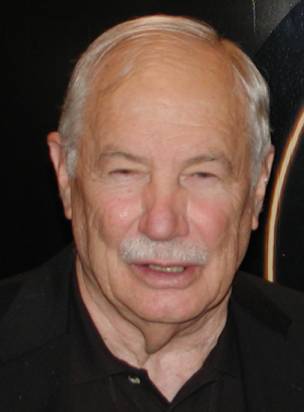

Process control guru Charles Cutler’s new Adaptive Dynamic Matrix Controller (ADMC) has just been licensed by Invensys Process Systems. Process optimization is a holy grail – both for refiners and advocates of the digital oilfield of the future. Cutler offered Oil IT Journal these insights into the new controller which has already proved its worth in a Chevron refinery—where a significant 3% improvement in process efficiency was observed. We kicked off the exchange by asking Cutler for a simple example of how the ADMC works.
Distillation column
The maximum feed that a distillation column can handle is when the feed control valve is wide open. But this will mean that the top condensing system cooling water flow, which controls the column pressure, is also at 100%. This in turn requires the pressure control on the column, made by adjusting the steam flow to the reboiler or feed preheater. Today’s PID* controller models are in general not valid for wide-open valves and their multivariable controllers (MVC) cannot achieve this additional capacity since this would invalidate their model. The ADMC optimizer moves process control up in the hierarchy—so that a larger ‘chunk’ of the process is managed and optimized. The ADMC’s dynamic model of the whole column can calculate the feasibility of opening the feed and cooling water flows to 100%, while maintaining the products on specification.
Open loop
The ADMC does all this by using an ‘open loop’ model of the process, eliminating the PID controllers from the control hierarchy. Removing the PID controllers solves many problems such as those associated with sticking valves, increasingly a problem in modern plants as operators over tighten valve mounts to comply with emission control regulation. Removing the PID controllers from the control hierarchy also eliminates the model errors due to tuning and configuration changes.
Adaptability
The real dynamic components of a process are determined by the capacitances and transport lags which are set by the size of vessels, liquid levels, catalyst inventories, and the length and size of piping.
Economics
Experience shows that 20 to 30 percent of the degrees of freedom of an optimized controller are used at valve constraints. MVCs need to maintain some flexibility for the PID controller to move its output or the valve will saturate. The multivariable controller valve position constraints are set to keep the PID controller functioning, which is usually two to three percent of the effective span of the PID controller. In other words, the traditional MVC falls short of the economic optimum by at least two to three percent of the processes’ potential value.
Invensys
Invensys has signed a marketing agreement with Cutler Technologies for the ADMC. At the press briefing in the Invensys Process Systems user group last month in Dallas (see pages 6-7), the ADMC was described as the ‘the first major enhancement in process control for 30 years.’
Mustang
In a separate deal, Houston-based Mustang Engineering signed a deal last year with Cutler Technology to be the ‘preferred independent service provider’ for the ADMC.
* Proportional-integral-differential controller—see http://en.wikipedia.org/wiki/PID_controller.
© Oil IT Journal - all rights reserved.